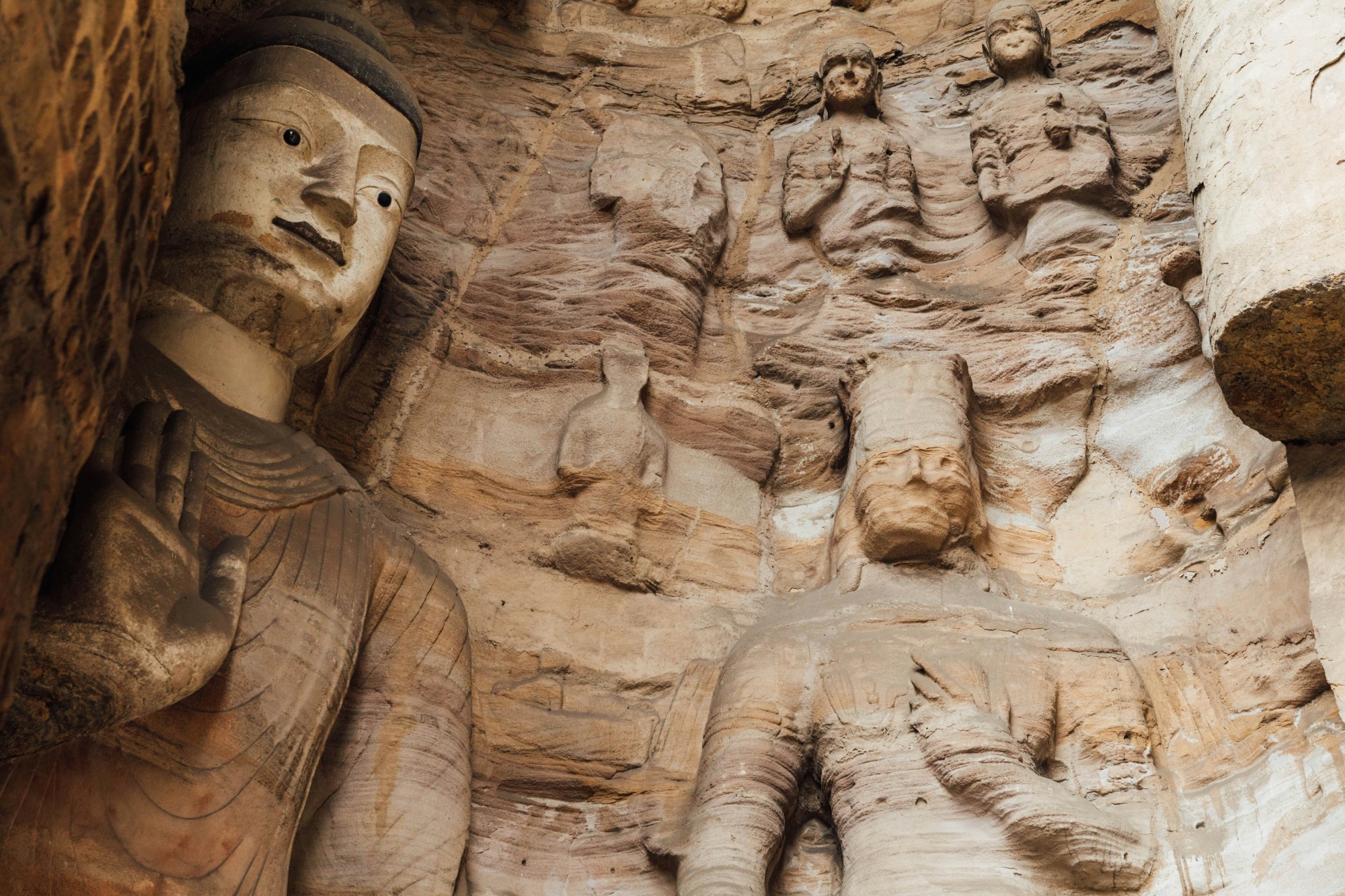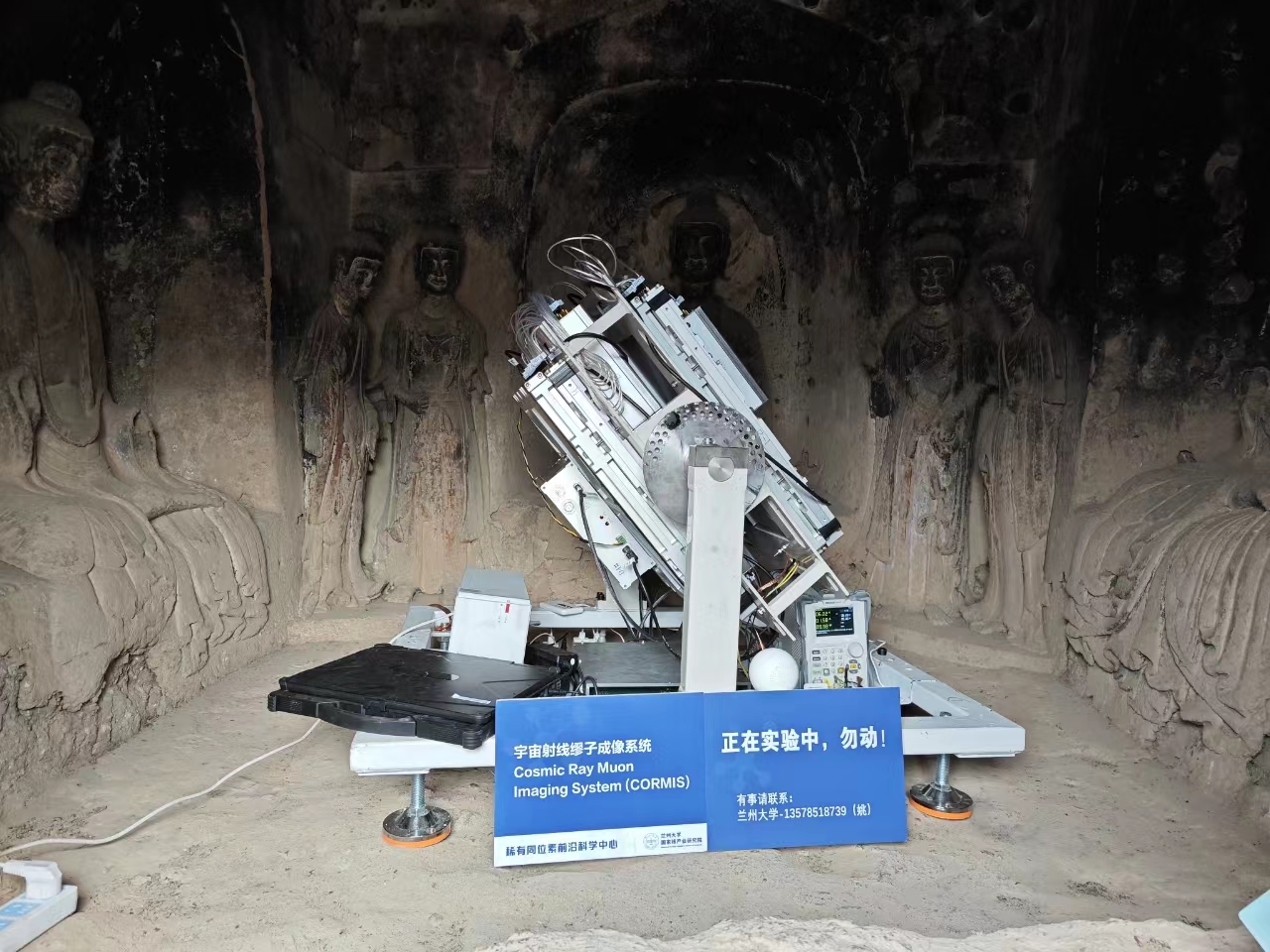The Role of Cosmic Rays in Cave Buddha Conservation
Nearly a century ago, renowned Chinese writer Bing Xin stood at the Yungang Grottoes, amazed. All around her: carved Buddha figures, varied in size, dating back to the fifth and sixth centuries. Her report on the encounter is moving and lyrical, describing the grottoes as “works of divine craftsmanship, a stunning sight to behold. Each Buddha, each world, each wing, each flower, each leaf, is a masterpiece of precision, too beautiful to be captured in words or paintings.”
 Yungang Grottoes
Yungang Grottoes
What Bing saw represented a fraction of the 51,000 statues that dwell throughout 252 caves within the 18,000-sqm grotto complex. Located in Datong City, in northern China’s Shanxi Province, the Yungang Grottoes received World Heritage status in 2001. In recognizing the site, UNESCO called it “one of the greatest ancient stone carving art treasure houses in the world.”
A standout feature is the Five Caves, carved under the supervision of the monk Tan Yao. This feat of architecture, along with the entire grotto complex, is a testament to the artistic achievements and spiritual significance of Buddhism in ancient China. A living classroom, these works are invaluable in the study of ancient Chinese Buddhist culture, art, and history, as well as for the global understanding of human development.
Conserving heritage sites is hard
As with many archaeological sites, conserving the Yungang Grottoes is an ongoing challenge. Nature, human activities, and environmental factors have all taken a toll on the integrity of the structure and artworks. Many statues, murals, and cave structures have been damaged or are at risk of deterioration, making painstaking conservation and restoration work necessary. For that work to happen, an investigation and exploration of the structures’ deep layers must first take place — without further damaging the treasures or triggering a collapse.
Complicating matters, those fifth-century craftsmen left no blueprints to guide the conservationists of today. Those involved in the restoration believe that detailed plans actually do exist, recorded on a relic known as the Emperor Wencheng's South Tour Monument. But the elements have interfered: Erosion and water damage have rendered the relic tricky to decipher.
A solution: The Tanyuan Plan
When Tencent learned about efforts to preserve the grottoes, we quickly put the company’s Tanyuan Plan into action. Launched in 2020, the plan promotes the use of innovative technologies to protect the most precious heritage sites in China.
A Tanyuan expert team visited the Yungang Grottoes and met with the restoration team. We helped them identify pain points, critical needs, and the right specialist technology partners. Preserving the authenticity and integrity of the ancient caves requires a delicate balance between faithful restoration and minimal intervention; the wrong approach could cause irreparable harm.
Cosmic rays for delicate treasures
Tencent found a partner in Lanzhou University’s Rare Isotope Frontier Science Center. The center is a leader in muon imaging technology, which can be used to explore the hidden depths of the Yungang Grottoes. It sounds sci fi, but muons are real. These subatomic cosmic particles can penetrate deep into the ground and solid materials without causing damage. As muons are smaller and more effective than X-rays and other traditional imaging methods, this imaging allows researchers to study the caves’ interiors without compromising their integrity.

By penetrating deeper, muon technology can reveal the intricacies of the grottoes’ interiors. With precise scans and detailed imaging, researchers map out the contours of the caves in 3D, identify potential areas of structural weakness, and help develop targeted conservation strategies. Muon technology can even locate and identify buried artifacts and archaeological features without excavation.
This technology can potentially be applied to similar cultural preservation projects, and other scenarios such as glacier measurements. We hope to roll it out for use by the wider conservation community to protect our cultural heritage worldwide.
Preservation for now and the future
The significance of the Yungang Grottoes extends far beyond their historical and artistic value – they serve as touchstones of spiritual development and human identity. Utilizing innovative technologies such as muon imaging, alongside other advancements including digital twins, serves a dual purpose: It preserves the physical artifacts and also safeguards the stories, beliefs, and hopes of past civilizations. These technologies aid in digital archiving, restoration planning, and public engagement with cultural treasures.
With their help, we can enjoy the beauty of past human achievements — today and for generations to come.


